With Friday comes the fifth of this time travel interview series, this time with the then up and coming Caleb Hahne.
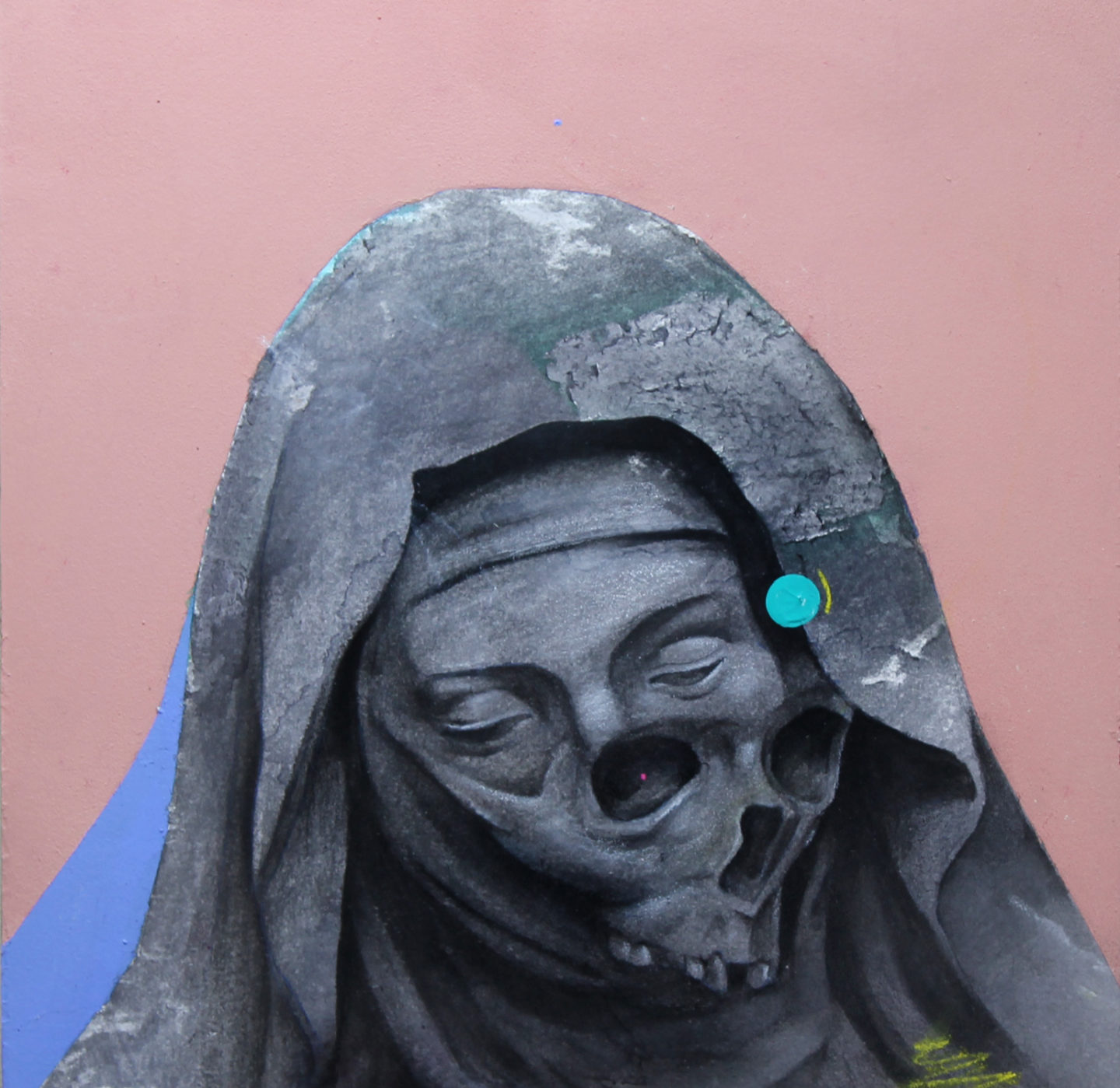
PINK HEAD/CALEB HAHNE
Caleb Hahne is a recent grad (he’s the kind of 21 year old that makes me feel like I’ve done nothing with the same number of years) from the Rocky Mountain College of Art & Design whose work revolves around the utilisation of technology and traditional techniques to confront the allure of a blooming cyber media. Or, in more practical terms, he creates mixed media collages that borrow from classical antiquity, internet culture as well as art theory.
“Mocking life while imitating figures in a relatable, distant, and monumental state is what haunts me, and I love it.”
Caleb merges images of Greco-Roman statues digitally and then transfers that image using good old fashioned pencil and paper, before interrupting the line with intrusions of other media. These new composite images, through quality of line and composition, have a certain fluidity, as if the new conglomerate were moving as one in multiple directions even if you know the case not to be true or possible. The technical aspect of this style harks back to the master draughtsmen of the renaissance whilst drawing from the modernists in the sense that even if these aren’t readymade objects they’re readymade images within the audience – it is impossible to shake the fact that you are aware that these are drawings of images of statues which are unmistakably the work of someone else and which have been etched onto your cultural consciousness through years of societal programming.
“The internet seems infinite, and it acts as a purgatory for cyber-souls”
Caleb draws inspiration from his relationship with technology as a child of the internet age (Caleb was born in 1993), the graffiti art he saw as a child, as well as more theoretical sources such as the ideas found in texts such as ‘7 Dada Manifestos and Lampisteries’, ‘The Broken Frame’, and ‘The Poetics of Space’. He uses his art a way of drawing out the questions he has from life, and the aforementioned texts, but leaves much of the interpretation of any potential answer in the eye of the beholder.
“I’m currently interested in light as a metaphor of life, and how my stone figures mock life as they sit in a state of infinite death.”
As well as putting work online on his website and across social media, Caleb was recently invited to be part of a group show at Modern Eden Gallery in San Francisco, alongside: Marco Mazzoni, Shawn Huckins, Meryl Pataky and many more.
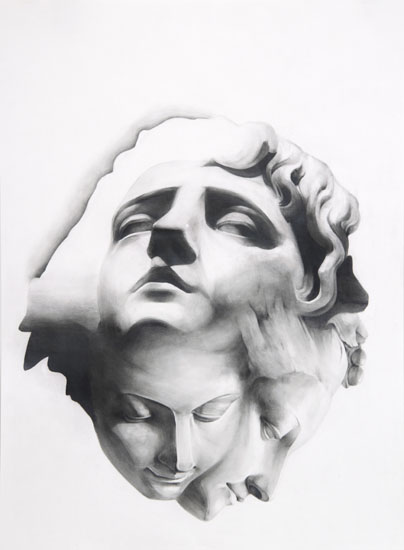
BENEATH THE MOON/CALEB HAHNE
You use a mixture of traditional and technological techniques, what was behind that decision?
I studied illustration in college and I found that the first half of my education was rigorous in the traditional practice of art and transitioned to the digital. I had some sort of existential crisis because I couldn’t keep up with the change that was happening so quickly. At the time I was reading a book called 7 Dada Manifestos and Lampistries by Tristan Tzara and in it he talks about how the biggest Dadas of them all are those in the French Academy and that was the form of education I was trained in. So as I thought about the this form of training and the practice of appropriation of the Dadas, I combined digital collage with traditional drawing and began illustrating the questions I had.
With the practical aspect of mixing the traditional and technological, what’s the process behind your collages like?
It takes quite a bit of time. I usually have an idea in my head of what I want. It’s an arrangement of a series of images that blend together until I feel it’s right. I won’t start a drawing until I’ve made about four or five collages. I’ve got hundreds of demons floating around my hard drive that have never been seen. I’ll work on the collages for days and sometimes weeks before I feel that it should be drawn.
You also seem to take cues from a lot of classical images, how do you feel that parallels or intersects with the current ease of disseminating work – especially online?
Well classical artwork has always stood out to me so I feel that I’ve been inspired to explore what they were doing ever sense I started making art. I also feel that classical work is most easy noted so I wanted to put old and new into a filter to see what would blend together. Appropriation has been a constant theme in my work so I figured I would begin collaging the sculptures together, then I realized during the hunt for the images to collage, that the internet seemed to be the most valuable resource. I found more images in less time and could use the same material over an over.
In your artist’s statement you say you’re interested in “confronting the allure of a blooming cybermedia”, could you explain that confrontation a little and why you think it’s an important pursuit?
Most people i’ve met say that they make art about what surrounds them; technology surrounds me. I was born in ’93 so I’ve had the chance to experience the world change in so many ways. I don’t know what kind of work I would be making if it weren’t for the vast wealth of technological resources that are readily available. As I mentioned previously, I like mixing old with new, remixing it into images that are reflections of death. The internet seems infinite, and it acts as a purgatory for cyber-souls
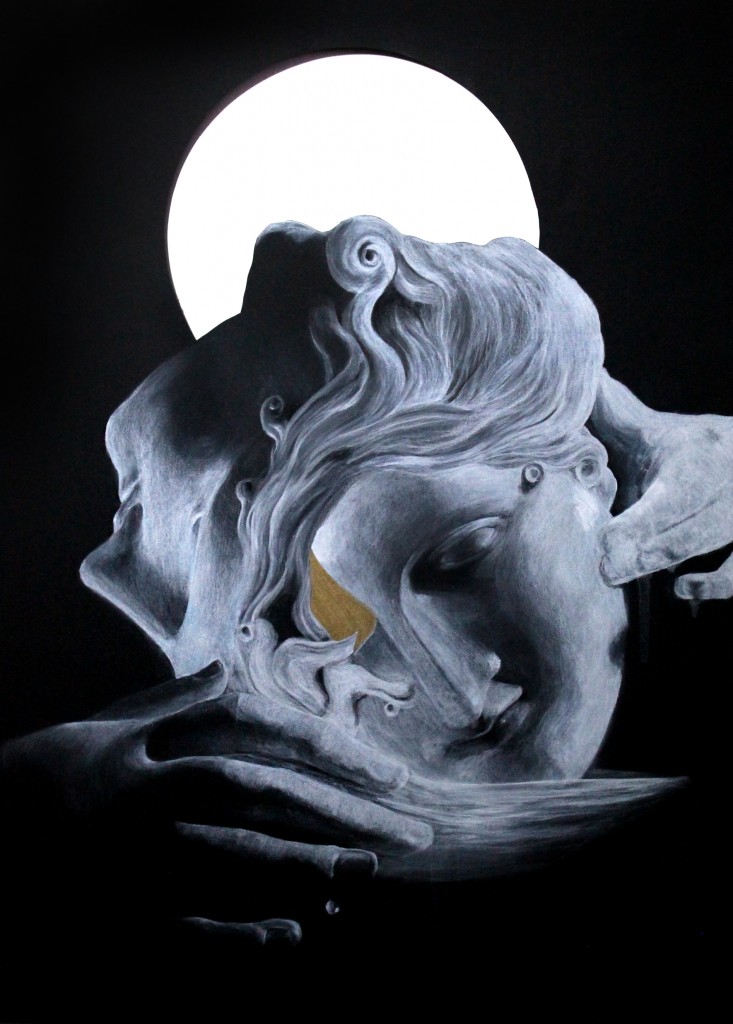
WHITE PIECE/CALEB HAHNE
As an ‘up and coming’ artist how necessary do you feel it is to be represented online and across social media?
I think it is extremely valuable and necessary to have an online presence. It’s so easy to post work onto many social platforms. Instagram has been a surprisingly enormous contributing factor to getting my name out. And if it weren’t for some sort of platform, I wonder if you would’ve ever seen my work?
In addition to posting work online, does the internet feature anywhere else in your creative process?
Not lately. I’m currently interested in light as a metaphor of life, and how my stone figures mock life as they sit in a state of infinite death. A lot of the work I have made is surrounded in a void of white space. I have spent a lot of time thinking about what the space is a representation of. The drawings are immortalized in an echoless space that can be related to that my pervious comment about the internet. The void represents an enormous unfathomable space that limitless. At the same time, I think about the Buddhist concept, Sunyata which translates to “emptiness” or “openness”, it’s a state of mind and/or a meditative experience. I’m playing with two ideas: a empty space which represents nothingness, or an emptiness that represents the nothing that is something.
You’ve mentioned both Buddhism and the Christian concept of Purgatory, how strong of a role does religion and/or theology play in your work?
I get asked about the role religion plays in my work pretty often and in some cases offend people because the altering of their original image seems “sacrilegious”. I’m not entirely interested in confronting those ideas as I am interested in using those theologies as a framework to help illustrate the exploration of my practice.
Why do “reflections of death” hold such an interest for you?
Death surrounds us. Questioning and confronting one’s mortality is difficult.
If the internet is “immortal” do you ever feel any pressure to create something that will stand the test of time?
This is an interesting question. As I start exploring my work more and more, I feel less attached to its life. The process is important, I’m not sure the outcome/completion of the piece means anything to me.
In a similar vein, how do you feel about being able to look back over archives of your work online?
Ah it’s awful haha. When I see I piece of mine on google or anywhere else that I’m not so happy with, I have to look away.
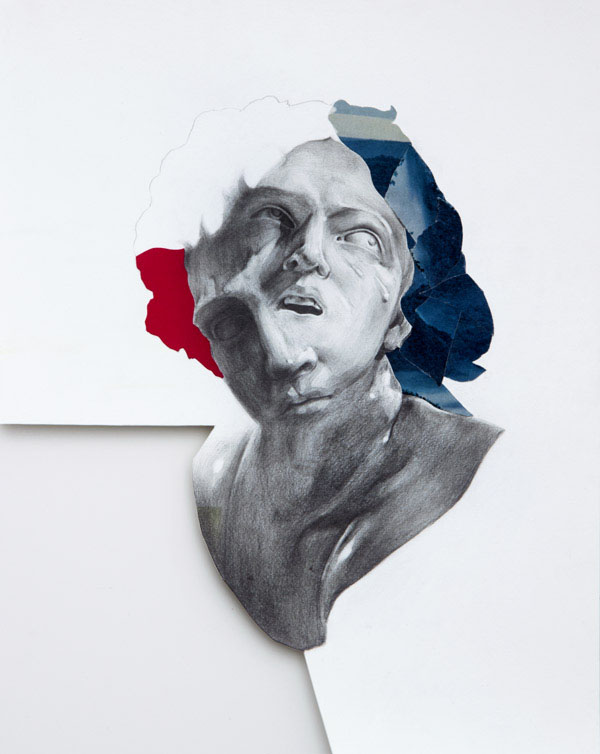
IMAGE/CALEB HAHNE
I think I remember you mentioning recently that you were going to be a part of a big collective show including another one of my favourite artists, Marco Mazzoni, could you talk a little bit about getting to display work with guys like that? And maybe a little bit about the kind of work that you’ll be putting up there and in the future?
I’ve looked up to Marco Mazzoni since I was in high school, and when I got invited to be a part of that show I was humbled. Having the opportunity to show with any big names has reminded me that I got to that point by working very hard and to not stop because of the opportunity. My own little mantra is to keep my head down and keep working.


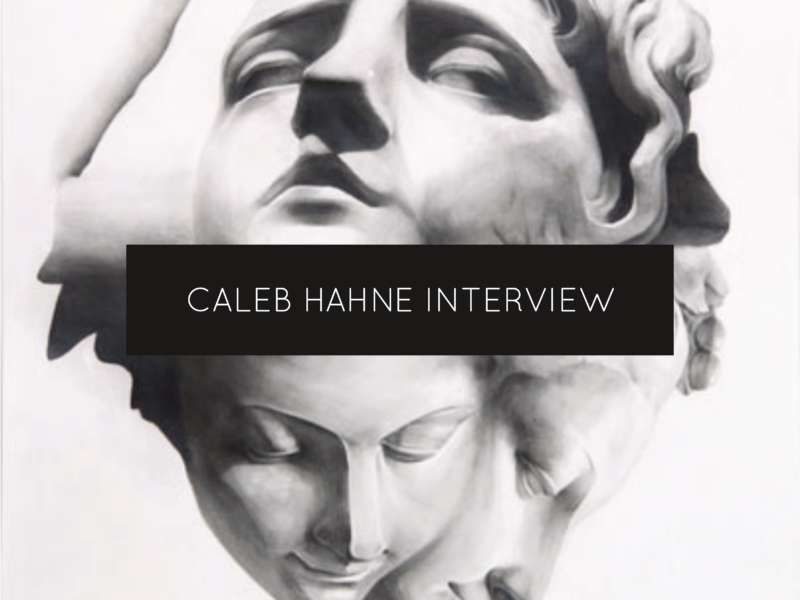
It’s kind of like a collage of mixed media & historical influences mixed with current culture. I love it. :]
// ▲ itsCarmen.com ▲